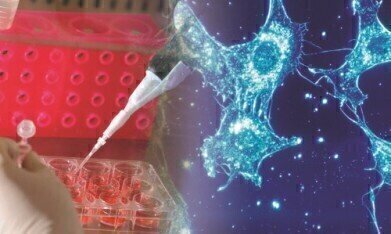-
 Tissue testing could prevent breast cancer reoperation
Tissue testing could prevent breast cancer reoperation
Bioanalytical
Tissue testing could prevent breast cancer reoperation
Apr 08 2014
Unique laboratory testing during breast cancer lumpectomies could save patients from having to repeat the procedure. This real-time tissue analysis ensures that surgeons have removed all cancerous tissue and can prevent people from having to have another bout of surgery in around 96 per cent of cases.
The research, conducted at the Mayo Clinic in Rochester, has a success rate much higher than the national rate for preventing reoperation. During the study, the researchers found that 13.2 per cent of breast cancer lumpectomy patients nationally had to undergo another operation within a month of their original procedure. This figure dropped to just 3.6 per cent at the Mayo Clinic, which uses frozen section analysis.
The method used by the clinic tests for cancer in the excised tissue, while the patient is still on the operating table. The research, published in the Surgery journal, has been pioneered at the Mayo Clinic for more than a 100 years and has been used in a number of surgeries.
In regular breast cancer lumpectomies, surgeons remove tumours with a small amount of normal tissue around them to help ensure they have removed all traces of cancer. This is known as obtaining “clean” or “negative” margins; however, at the Mayo Clinic that tissue is taken into a pathology lab. The edges of this excised tissue are shaved and frozen to be analysed under a microscope.
In a matter of minutes, while the patient is still anesthetised, the pathologist can immediately say whether the surgeon needs to remove more cancerous tissue or if the lumpectomy has been successful.
The innovative technique is unique to the Mayo Clinic and it remains the only centre in the US to perform frozen section analysis. The clinic also uses microtome, modified by itself, to freeze tissue so the pathologist can get a complete view around the lumpectomy cavity.
“This intense pathological evaluation with the use of frozen section of the margins while the patient is asleep really drops down the re-excision rate,” said first author Dr Judy Boughey, a breast surgeon in the Mayo Clinic Cancer Center.
“Achieving negative margins in one operation has a huge impact on the patient’s satisfaction, decreases time away from work, time traveling back and forth to hospital appointments, and the financial cost to the patient, the insurance company and the hospital for a second operation.”
Digital Edition
Chromatography Today - Buyers' Guide 2022
October 2023
In This Edition Modern & Practical Applications - Accelerating ADC Development with Mass Spectrometry - Implementing High-Resolution Ion Mobility into Peptide Mapping Workflows Chromatogr...
View all digital editions
Events
Apr 23 2024 Kintex, South Korea
Apr 23 2024 Seoul, South Korea
Apr 28 2024 Montreal, Quebec, Canada
May 05 2024 Seville, Spain
May 15 2024 Birmingham, UK













